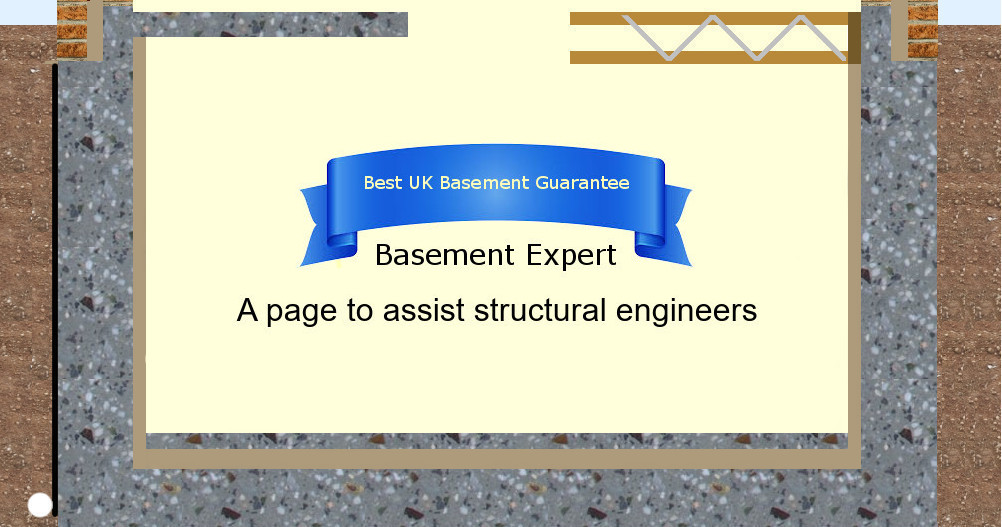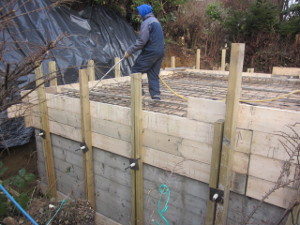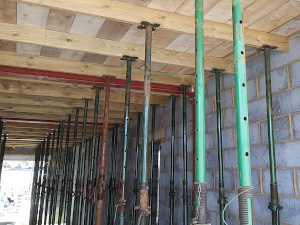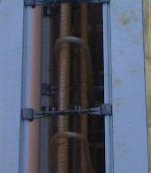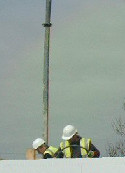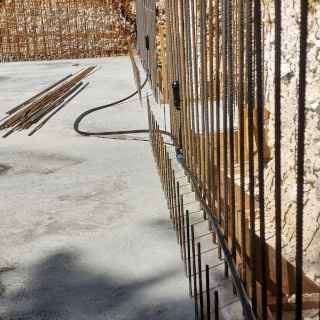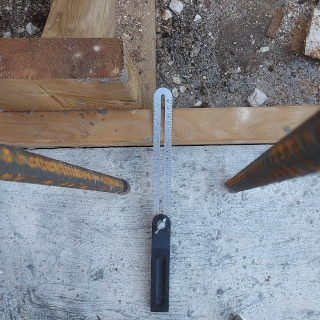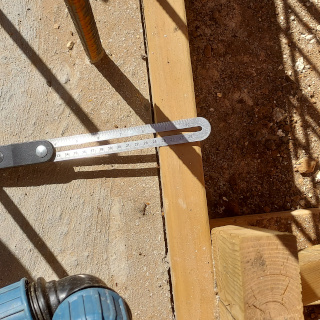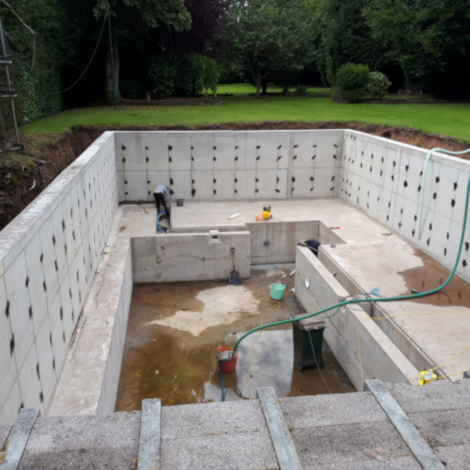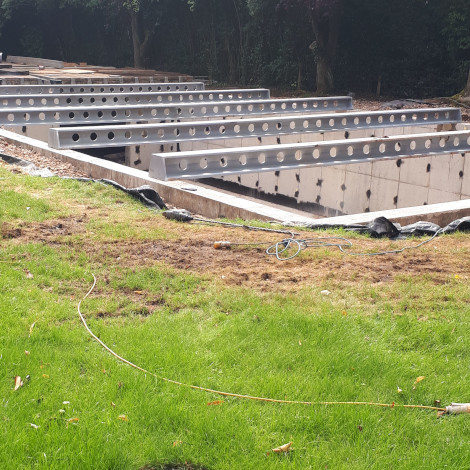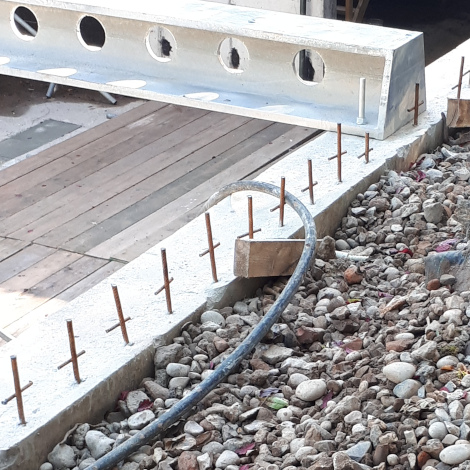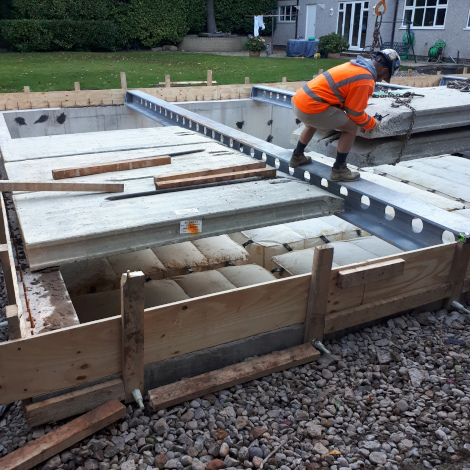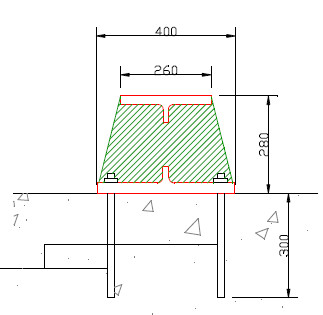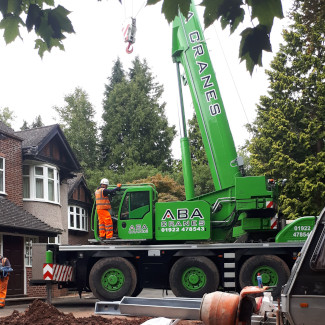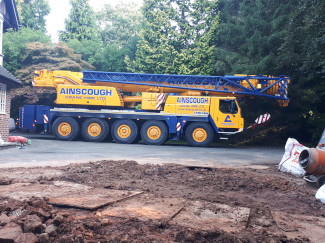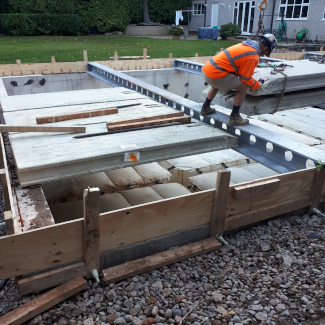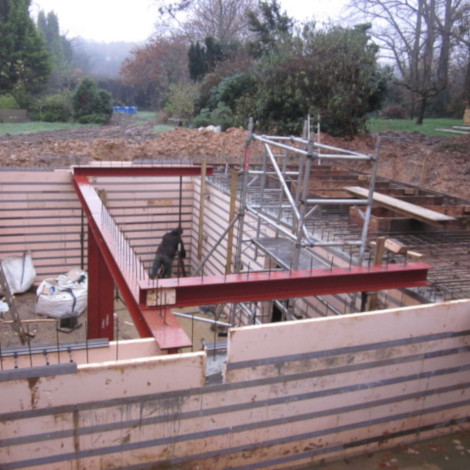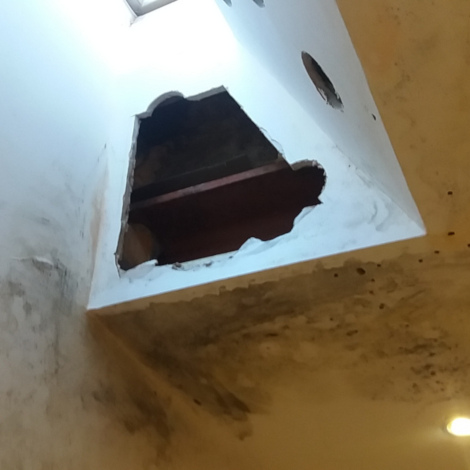| |
Basement Structural Engineer.
The structural design for a structure beneath ground must comply with Building Regulation C2. The Building Safety Act 2022 is fully in place now, and it was tested in the Supreme Court. A firm of structural engineers was found liable for their poor choices going back 30 years.
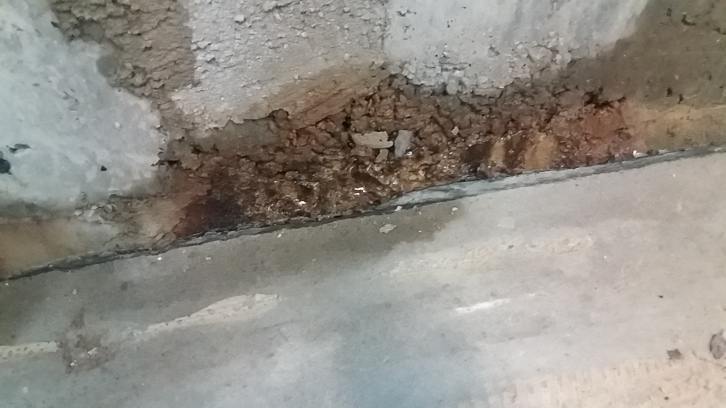
|
From Part C "Site preparation and resistance to contaminants and moisture".
|
|

|
This is a list of regularly made poor choices that fail Regulation C2.
-
concrete kickers
-
joint strips
-
forming walls more than 2m high at a time
-
threaded steel rods through plastic tubes
-
not understanding crack width control varies as cement type varies
-
and allowing formwork to be loosened in less than 72 hours from when filled with fresh concrete
These have all contributed to leaks that let in mud, blocked pumps, flooded basements, and made occupants ill.
The law broken.
As this becomes more widely understood, there will be claims against structural engineers, who will be forced to pay out damages.
Not least, because the new Building Safety Act 2022 has been tested in the Supreme Court, and The Barratt Homes v URS Structural Engineers precedent confirms negligence costs against designers can go back 30 years.
Read the first press article I saw here.
Many other articles have been written about it since. The headline of this one includes 'floodgates'.
Imagine the damages to completely gut a finished basement, resin inject through the wall to the soil behind everywhere, and compensation for illness, suffering, and disruption.
But please don't worry. I have been developing my methods for 20 years. None of my self-builder clients ever had a leak since 2013. My clients who used experienced labour had one or two minor leaks, on average, but because I tried to make the experienced labour build properly, the leaks were all simple to repair.
The surest way to protect yourself from a later claim, is to simply specify that the basement must comply with Grade 3 (habitable accommodation) in Table 2 of BS8102:2022, Protection of below ground structures against water ingress - Code of practice "No water ingress or damp areas is acceptable."
You can understand that the leaking in the photo above is completely unacceptable.
Chapter 11 of the same Standard states that any and all leaks must be fixed.
It is impossible to fix widespread leaks with a pressure of water pushing the repairs off before they have a chance to cure, harden and bond. Except by spending thousands of pounds on injecting the whole area behind the wall.
At 11.1.A.2 it states "Complete replacement if repairs not possible".
You should clearly specify against the 6 causes of leaks, above, that are within the realm of structural design.
These need to find their way into the specification and tender document.
|
|

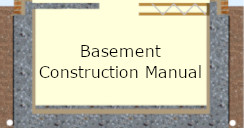
|
What has been happening, is the workforce see a sump in the floor of the basement and assume leaks will be pumped away. That incentivised them to leave more and worse leaks, that let in mud and blocked pumps. When the rain continued, the basement flooded. Then mould. Then illness.
Since URS lost in the Supreme Court, more lawyers will be becoming involved in future claims for new and past negligence.
BS8102:2022 replaced the 2009 version that was withdrawn on 31st March 2022.
The 2009 version championed internal drainage. But the 2022 version states, at 3.16 "A cavity drain membrane is not considered to constitute tanking". It is not a waterproofing measure. It may still have a role in a Victorian cellar conversion. But not in a new build where the workforce might leave much worse leaks than the Victorians left.
The Insurance Backed Guarantee for the internal drainage is for their labour and materials only. It isn't their fault or problem if mud got in through the structure, despite their being the very people who covered over and hid the holes from everyone else.
The Structural Warranty excludes beneath ground waterproofing. (Ironically, it has been structural warranty providers who face no risk who have been calling most loudly for internal drainage.)
The sub-contractor will go out of business, at the first sign of litigation.
Who's left? The structural engineer who actually specified concrete kickers and joint strips, and who allowed walls to be poured to the top in one go, meaning fresh concrete splattered all over the inside of the formwork and stones arrived at the bottom all on their own. And the vibrating poker got caught up before it reached the bottom, not that a poker re-mixes segregated concrete anyway.
And the engineer whose crack width calculations did not allow for pure OPC getting nearly 30oC hotter during curing, nor considered properly the length by which a long wall needs to shrink on cooling. Long walls are generally restrained by the corners, so they have to crack.
Text box explaining the extra steel needed to restrict crack widths in concrete that gets hot, here. This link jumps you down this page.
The Bolum test makes it clear. Proving everyone else is just as negligent is not a defence. If you allow any of the 6 faults, listed above, beneath ground you are negligent. I go through court cases here, on my page for architects.
Beware of doing what you think everyone else does. The new Building Safety Act is changing what you and everyone else should do. Incompetence faces sanctions.
This page is to help engineers design to the new BS8102:2022 'Protection of below ground structures against water ingress - Code of practice', Building Regulation C2, The Building Safety Act 2022, the new building control regime, and steel reinforcement to be tied with cordless Makita electric reinforcement tying tools, that cannot get in where pliers could. Example here.
In other words, the guidance here is simple, it works, and it protects the design team with regard to the new competency requirements.
You still need to do your calculations. But where you have a choice, this guidance tells you which choice is best to select, and why.
BS8102:2022 states, at 6.2.5,
"Continuity of waterproofing protection
The need for continuity in the waterproofing protection should also be determined when selecting a type of protection. In most circumstances, the protection should be continuous (typically from DPC level or 150 mm above ground throughout the below ground structure)."
and, in Table 2
"no water ingress or damp area is acceptable".
Building regulation C2 says it is the floors, walls, and roof that must protect.
Only continuous waterproof reinforced concrete can achieve this. See the sketch at the top of every page. But it must be built without cracks that don't autogenously heal (less than 0.1mm wide), voids, or leaking joints.
It is worth my noting that neither sticky-back membranes, nor single-coat renders are recognised as waterproofing measures in the new Standard either. Because they all fail.
Overall, the client should save quite a lot of money.
-
No tapes or strips in joints that don't work, because they arrive rolled up and don't fix to flat surfaces. Instead the joint scabbled (which only need be a brush finish when the concrete is only 2-3 hours old), cleaned and kept clean till the next concrete arrives - as authorised by BS8007.
-
No stop ends in the walls. They leak because the joint strip doesn't stick, plus they are expensive to form and strike.
-
No threaded tie bar holes to seal. My FRP rods and nuts, here get cast in and will never, ever leak. They just get sliced off at the end. No one outside Europe leaves holes like we do.
-
No concrete kickers to try to repair later. There are several alternatives to concrete kickers that are never as waterproof or strong as sound floor and wall concrete.
-
No honeycombing in wall concrete to repair later. Honeycombing is caused by pouring too much height in one go. And prevented by specifying and making sure less than 2m height is formed and poured in one go. It means a joint to brush and keep clean. But much cheaper than stop ends.
It also prevents the contractor trying to hire the very minimum formwork, use it many times over the minimum 4 week hire period, and trying to fill each section with a digger bucket to avoid the cost of pumps.
-
NO INTERNAL DRAINAGE SYSTEM
No digging a hole for a sump which sometimes finds water, is almost never covered by insurance to protect the workforce because it might be down too far for standard cover.
No concrete sump structure for the plastic sump to be designed and cast with small deliveries of quality concrete that come with a small load surcharge. Or some kerb or footing concrete when they need those and order an extra half cubic metre for the sump base or walls.
-
No breach of building regulation C2. No claims for repairs, damages or disruption to be allowed for as contingencies increasing the project cost.
Click here, opens in a new tab to open the homepage at the start of a case study from 2020. One RC wall is all that completely prevents water, under pressure from the lake height, getting through.
I typically save private clients about 70% compared to a main contractor who blindly employs sub-contract labour who say they do this all the time. But, really, they do this work all the time on big commercial projects where the main contractor has site engineers checking and signing off everything and doing their best not to miss any cheating.
Leaving these people alone to build a basement, with the main contractor for just a new dwelling never to be seen, as well as no idea themselves, means experienced labour think they landed in clover and they make the most of cutting corners while they have the chance.
Which is why the engineer must specify away all the known causes of leaks. If the sub-contractor pays no attention to the specification, the engineer could be in the clear.
I am looking forward to working with sub-contractors, forced by the new regime, to build with far more care than ever before; and inspected like never before.
But after more than 3 years since the new Standard, my phone has yet to ring from any contractor.
Some other important points:
-
BS8110 at 3.1.5.1.h "workmanship, to obtain full compaction"
-
BS8110 at 2.3.a states "Care should be taken to ensure that design and detail are capable of being executed to a suitable standard"
-
It should be specified that no formwork may be released from the concrete (much less removed) within 72 hours of the concrete being placed. BS8110 states at 3.1.5.2.1 "
Good curing (see 6.2.3) is essential to avoid the harmful effects of early loss of moisture."
When I was a site engineer on big projects myself, until 2004, the concreting gang would finish concreting at 8pm, and the carpenters would be taking shuttering off at 7.30am, releasing a cloud of vapour that floated away, and became unavailable for the chemical reactions.
My name is Phillip Sacre. I have been building and helping to build basements since 1989. I sell my expertise and some products I sourced because they are better than the famous brands. Since 2004, my clients have mostly been self-builders, seemingly the only people who care that a basement is built dry.
Designing basement reinforcement that can be tied with a cordless rebar tying tool.
Where basement floor slab reinforcement is very simply A393 top and bottom and 16mm starter bars to near and far faces, there are two problems.
-
Getting the starter bars in exactly their correct location is difficult because it is very difficult indeed to line up all the squares in A393 so that starter bars tied to them have the correct concrete cover.
First, because when you lay one sheet overlapping the neighbour, the overlap bars sit side by side so you couldn't have both sheets correct.
But also because as you add more sheets progressing to the opposite sides, all that walking on them moves the first sheets you set correctly because there isn't enough combined weight in the first few sheets of A393 to resist the moving around of 3 or 4 guys carrying another sheet of mesh.
-
The new difficulty is a machine won't go where pliers can.
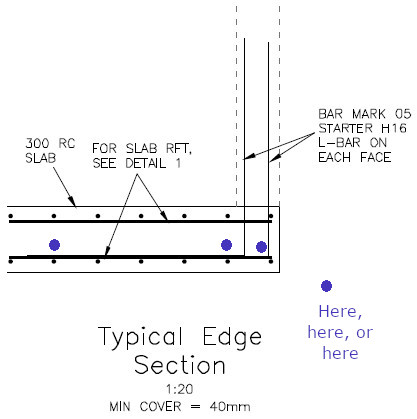
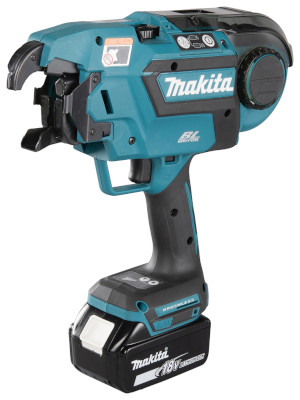
It has always been difficult getting starter bars in with the top layer of mesh fixed in place and the slab edge formwork in place as well. Especially where the starter also needs to be threaded through a continuous wire chair between the layers of mesh.
Elsewhere, I explain to self-builders that they will save a lot of time and grief if they have U bars around the perimeter with the top of the U long enough to be under the wall and then still long enough to overlap the top layer of mesh. Avoiding the top layer of mesh getting involved with any starter bar tying.
What I show here, setting up the first corner, are U bars relatively short underneath and longer on top.
And two straight 10mm bars tied precisely where the starter bars need to be when they are tied together.
When all the rest of the U bars and starter bars are tied in place, mesh-equivalant bars will be at least 10mm, in both directions, on 200mm centres.
When the A393 is added so that its bars continue the squares neatly, the overlap is provided by the top of the U bars.
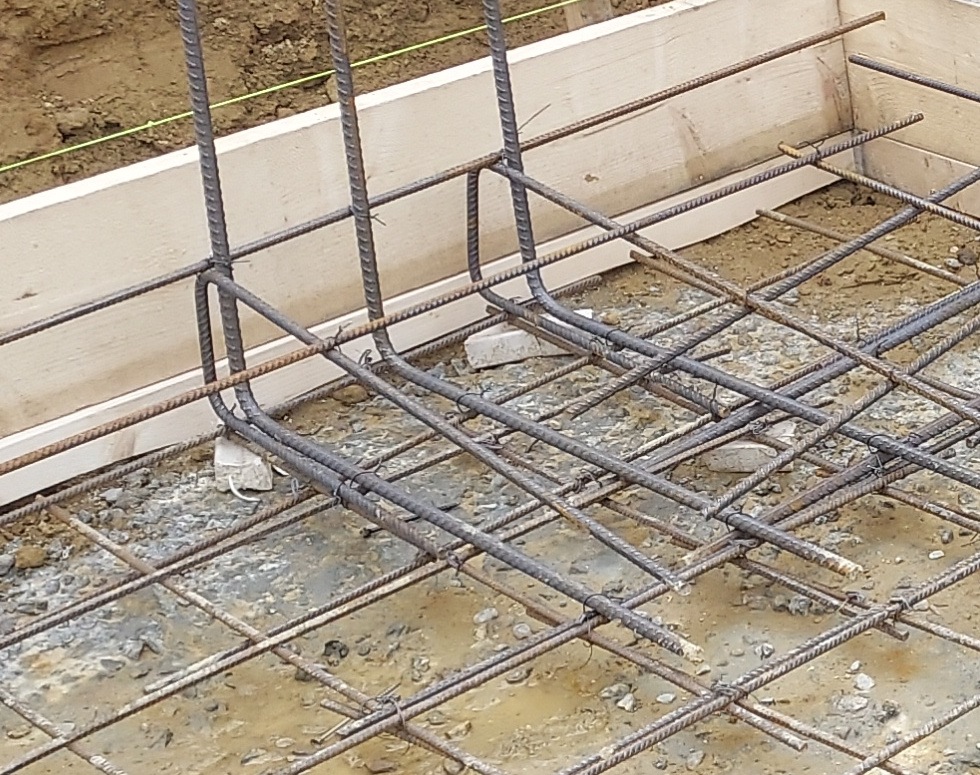
When all the starter bars are in, the chairs can be tied without much bother from the bottom tails of the starter bars, and the mesh completed.
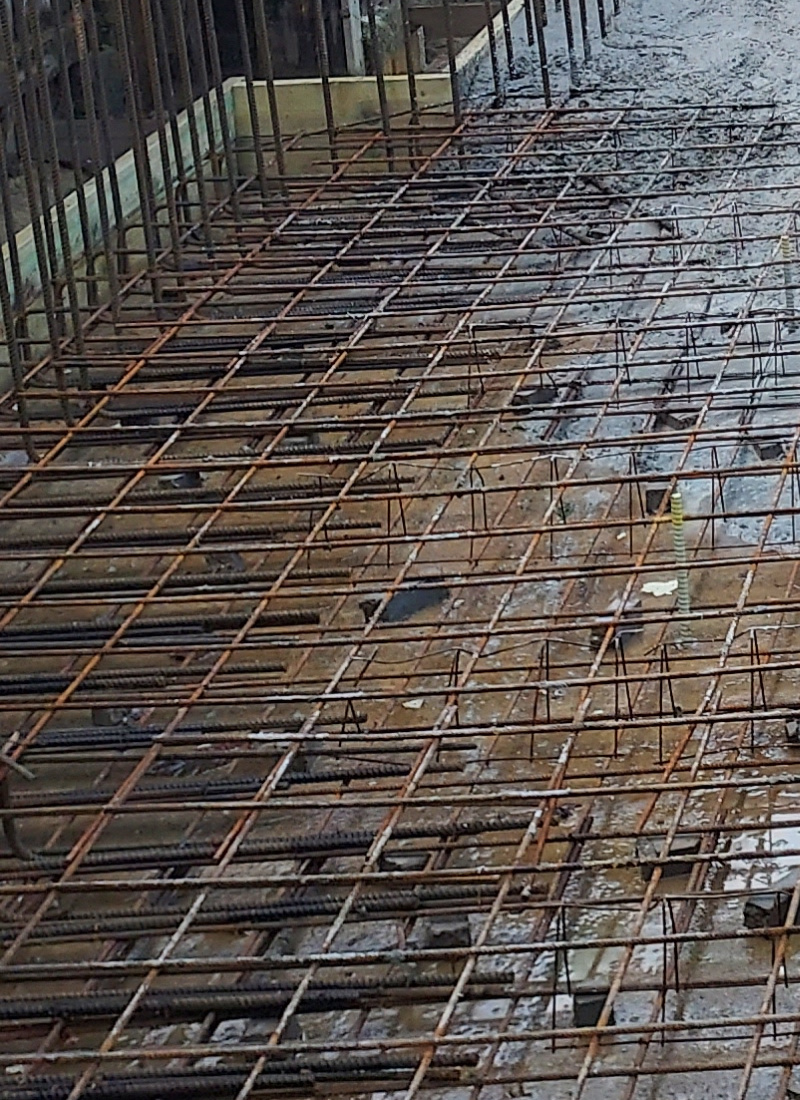
I would like you to specify, please, U bars such as H12, 1370, 21, 800, 180.
H10, shape 00, suitable lengths and suitable numbers. Perhaps a bit extra and allow them to cut to suit on site.
|
|
Ground floor over a basement.
A normally built house has a beam and block floor over the vented space beneath. Air bricks dry out the vented space. Water getting in under the ground floor leaks into the vented space and settles harmlessly on the earth beneath.
But in basement construction that same water is a leak. Breaching Building Regulation C2. (Find out more about C2 on the home page and the page for architects).
-
The ground floor over a basement must prevent a horizontal ingress of water beneath it.
-
The retaining wall must prevent a horizontal ingress of water over it.
RC cast insitu and engineered timber joists both work very well with insulation against the edges and without wasting accommodation space.

Beware. Precast concrete planks, beam and block, steel beams and composite steel decking work very badly indeed with basements.
They are often not waterpoofed between themselves and the soil.
They are often not insulated between themselves and the soil.
Except by making the basement smaller.
The aim of this web site, and the recently re-written BS8102 about waterproofing basements, is that the concrete structure is waterproof without being patched up, rendered or bad workmanship hidden by internal drainage.
The choice of ground floor and the retaining wall design often fail this requirement.
Note. Sticky-back membranes do not work and they are not favoured by BS8102:2022 (3.7).
There is no choice. The primary waterproofing must be the structure from the base of the floor slab to 150mm above finished ground outside, or the DPC. The structure must be repaired of leaks.
I review BS8102:2022 here. Opens in a new tab.
Basement construction with a flat top to the retaining wall stopping just beneath outside ground level will let water in horizontally beneath the ground floor and over the top of the retaining wall flat-top, with water running down the inside of the basement wall. It cannot be stopped except by internal drainage and only if that is lapped up and over the ceiling. It would be a shame if your client spent thousands of pounds on internal drainage and the only water it removed got in only because of your uninformed choice of floor.
In addition, a cold element such as steel beams cannot be waterproofed or insulated satisfactorily over the ends where they sit on a flat-top retaining wall beneath outside ground level.
Some engineers specify composite steel floors that get concrete added. These work fine welded to a steel frame above ground in an office block. Not sat on concrete beneath ground. The floor concrete cannot be joined to the retaining wall either, because the floor concrete will escape under the corrugations.
Basement construction, quoting the Standard, above, requires waterproofing to be continuous 'throughout the below ground structure' and to at least '150mm above ground or DPC'.
Basement construction of reinforced concrete podium deck or engineered timber joists and retaining walls with an upstand to at least 150mm above ground level is simple, cost-effective and meets the Standard.
If you specify steel beams, a beam and block ground floor, precast planks or composite steel deck with concrete on top, either the client will have to pay for a complex way to support his floor, losing real estate or it will leak.
I was the first specialist to promote an upstand which I now see has become common practice in basement construction.
Another form of basement construction, that also reduces the size of a basement, is to build blockwork inside the basement to support beam and block independently of the retaining wall.
In this photo, the right is outside and the left will be inside. I helped with all the waterproof concrete, the formwork, the pouring and the external land drainage. The overall wall width is about 600mm. The insulation had to be put in before the floor over could be installed, it already looks sodden.
It prevents the structure being inspected for leaks, and leaks being repaired, after the basement is dried and cleaned of rainwater.
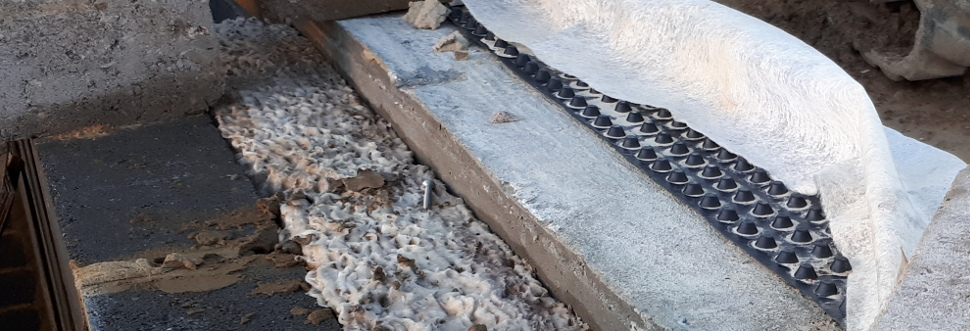
In my experience a waterproof concrete upstand is a most essential waterproofing measure.
It is very much easier to accommodate wall construction above a basement with a waterproof concrete upstand if engineered timber joists are used instead of beam and block or precast slabs.
outside brick ledge
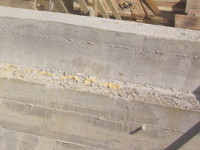
|
|
inside wall plate
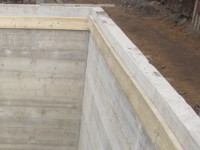
|
|
top chord supported
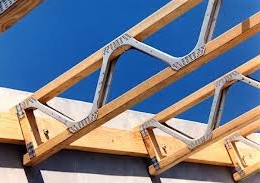
|
|
floor joists in hangers
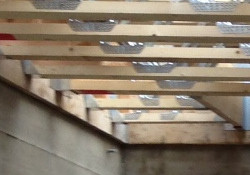
|
An engineered timber floor joist can be any width and any height and stronger than concrete (for the same overall floor construction depth including the service void beneath concrete). It can be a trus joist (OSB web), an easi joist (lattice steel sided) or plywood sided. Services can go through it.
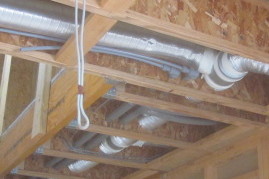
|
|
Lewis Metal Deck.
Underfloor heating for engineered timber joists.
www.cdi-icm.co.uk
|
|
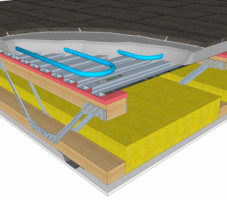
|
Clearly, engineered timber joists offer more choice than concrete and they are flat on top. With services through and not under, and without the need for a screed to overcome curvature, timber floor construction depth is usually less than concrete.
Waterproof concrete gets hotter while curing than ordinary structural concrete so the engineer will be asked to have enough extra steel to control the extra issue of thermal shrinkage cracking. Therefore there will be enough steel in the walls for their not to benefit from propping by a concrete floor over the top.
Please choose an engineered timber joist floor, supported off an upstand created out of waterproof concrete. The basement will cost far less this way. Indeed this way is often the only way that suits a tight budget.
Unless the ceiling over the basement has to be concrete, for instance it is a garage, outside or, sometimes, a kitchen. In which case concrete cast insitu is flat and absolutely waterproof all round.
I never use the usual steel threaded rod in a plastic sleeve across the formwork. I have FRP threaded rods and nuts. The FRP rods are cast in. No holes. No leaks.
My rods and nuts make forming an insitu concrete podium deck very easy indeed. The top row of rods for the wall are left to use again for an edge shutter. The upstand may need to be formed on the podium deck afterwards if, so far, the construction is still beneath outside ground level and the building continues upwards.
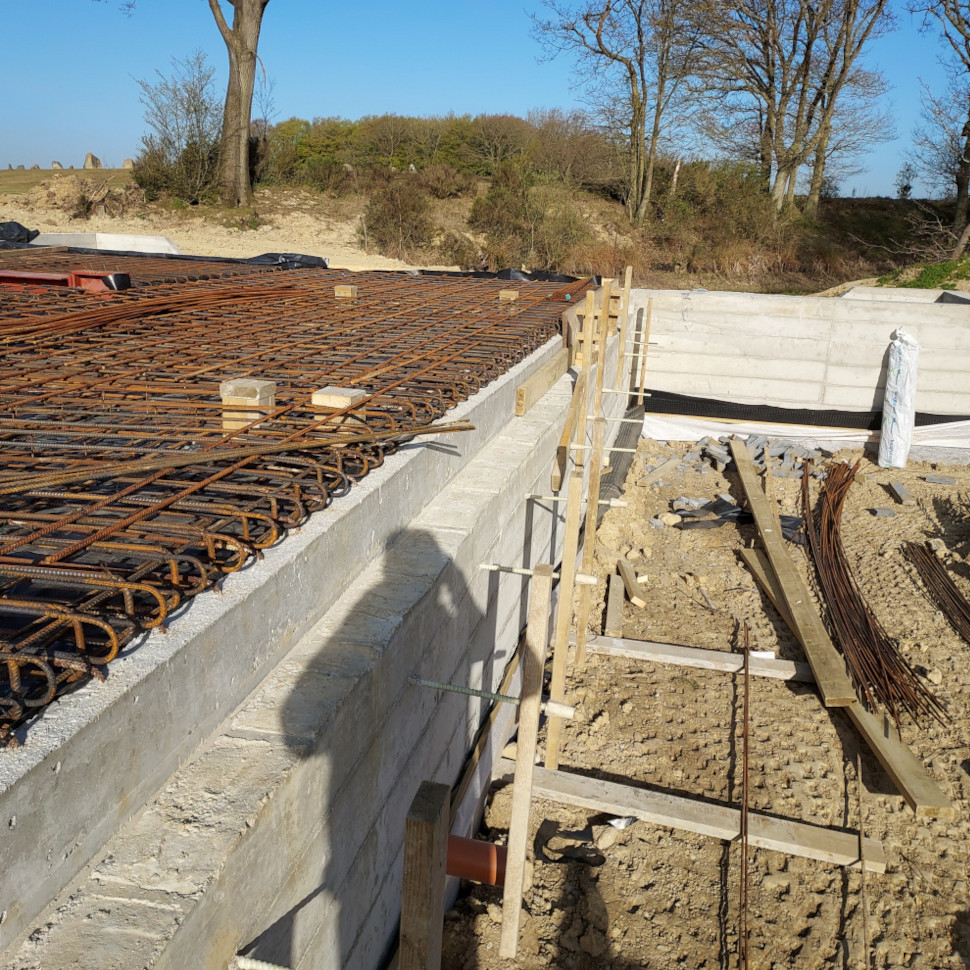
This deck will be buried by soil. There is no accommodation above, so no need for an upstand.
|
|
Room to properly place and compact concrete.
The Basis Of Design in para 2.1.4 of BS8110-1:1997 states: "Design, including design for durability, construction and use in service should be considered as a whole.", and 2.3.a states "Care should be taken to ensure that: design and detail are capable of being executed to a suitable standard, with due allowance for dimensional tolerances"
Your design has to allow, not prevent, the required standard of workmanship.
There must be room to get concrete to the bottom and compact it properly.
Capping Bars.
Some engineers like to see capping bars all along the top of a wall and, sometimes, even a central distribution bar.
Concrete cannot be poured through a tube to the bottom or properly compacted with a vibrating poker with this amount of obstruction.
In contrast, we like to have the same bar Shape 21 on 1.2m centres both horizontally and vertically throughout the wall (1m from the slab and 2.2m from the slab) to control the space between the steel and keep it all perfectly upright throughout, not just along the top which would leave the middle to curl and wave without control.
Neat steel gives everyone confidence.
Not having U bars along the top allows us to move the concreting pipe along the wall formwork without taking it right out every time - which greatly reduces the mess from concrete dribbling from the tremmie pipe.
Not having U bars along the top means that the poker does not have to be pulled right out of the wall every 200mm before it is lifted back in to do its next bit of compaction - reducing the amount of work the man on the poker has to do considerably.
The concrete is filled and the compaction is carried out far better without a top line of U bars. If the hindrance causes a failure in service, such as leaking honeycombed concrete that cannot be sealed due to the pressure of water getting through, the engineer is now punishable by the Building safety regulator for causing a breach of Building Regulation C2, with a line of U bars along the top.
|
|
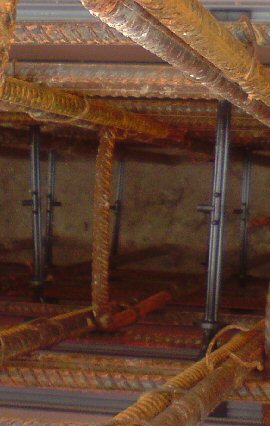
|
|
Extra horizontal distribution bars in walls to restrict crack widths in concrete that gets hot then shrinks as it cools.
This floor slab is 16m long. It was poured in 30oC heat. 68 hours later when it was 20oC, it had shrunk 2mm at one end and 3mm at the other. I think it is prudent to assume it will shrink another 1mm when temperatures return to average.
The coefficient of expansion of steel is 0.000011. Aggregate is about the same. That is, 0.000011 per metre and per degree celcius. 16m of wall that shrank 6mm must therefore have dropped 34oC in temperature, from its peak when curing till more average weather of 16oC. It peaked at 50oC.
A lot of recognised crack width formulas used by engineers are not this robust, and their design fails the structure.
A 16m long wall with crack widths restricted to 0.2mm must be made to crack 80 times or more.
Floors can shrink unrestrained at the edges. Walls crack because they are restrained by corners and starter bars in the noe-cool slab.
My solution a little bit further down.
BS8110 states, at 2.2.3.4.1 that "Cracking should be kept within reasonable bounds by attention to detail."
Some engineers completely ignore the potential for vertical cracks as a retaining wall restrained at both ends shrinks along its length.
I have a lot of basement construction experience making sure that waterproof concrete stays waterproof as it cures.
I have never seen walls crack horizontally, presumably because they can shrink in height unrestrained.
Cracking is regular and vertical in walls. Not quite to the bottom where there is extra crack protection from starter bars. Nor right to the top of a wall, presumably because walls are restrained at corners but even corners give a little at the top of a wall.
If the crack widths are sufficiently restricted, which means the concrete cracks many times instead of a few, they will completely heal.
But cement varies enormously. CEM 1, pure OPC, might get 34°C hotter. Flyash didn't get hot but we don't use flyash any more. GGBS runs out sometimes. Lime is being used a lot more. There isn't too much knowledge about a large proportion of lime in cement and no-one will tell us if the lime is ground fine or coarse.
Your client will use what he is given on the day, and that could vary if the plant gets a delivery.
Structural engineers cannot calculate how much steel is required to restrict crack widths to 0.2mm or less, because no one knows what cement will be in the readymix concrete.
This is typical of a crack where there is not enough distribution steel and the ends of the wall are restrained.
|
|

|
A 300mm thick wall with A393 back and front and 12mm starter bars on 200mm centres in both faces will crack like this and may not fully heal. Whereas the same steel in a 200mm thick wall seems to always heal completely.
We all want any crack to heal before we remove wall formwork 72 after pouring, to heal before water could flow through and prevent the autogenous healing process.
In 250mm thick and 300mm thick retaining walls more distribution bars and thicker starter bars seem to provide the solutions.
-
Two faces of 16mm starter bars on 200mm centres
-
A393 to both wall faces
-
Extra distribution bars horizontally in the wall between the A393 horizontal bars, meaning 10mm distribution bars on 100mm centres to both faces.
I would just like to mention, that a lot of engineers don't specify the length of a starter bar. When I ask, I'm told that the lap specified must be obeyed. It is missing a trick. If the 16mm starter bars are a metre long above the slab, they beef up the wall for the bottom metre (where you must assume there will be a load from water outside), and they are strong, making fixing wall mesh upright and neat a lot easier. But no more than 1m. We need to lift sheets of mesh over them.
Some engineers like B1131. 12mm on 100mm centres one way and 8mm on 200mm centres the other. It weighs 126kgs a sheet. Please do not specify it where there will not be a crane.
And don't forget that B1131 only has strength in one direction. It amazes me that usually, when B1131 is specified for walls, we are not told which direction the main bars should take, neither is there sufficient steel in the other direction.
At 30 hours old, the remnants of grains of cement are still reacting with remaining free water. When the wall cracks (out of sight behind formwork not yet disturbed) autogenous healing will take place as hydration continues. First a gel forms with a slight expansion. Then the gel makes crystals that will bind with crystals already made. All the cracks will completely heal if they were thin enough to do so, and not allowed to dry prematurely.
I never loosen formwork for 72 hours. During this time the concrete increased up to 34oC and expanded. It is essential to wait until the concrete cools and shrinks, or else it will lose a huge amount of remaining free water, and there won't be enough water remaining for cracks to heal.
The engineer should specify the same. No loosening of formwork in the first 72 hours after concreting.
I never see these cracks any more. They came and they went before I expose the concrete.
The old BS8007 has an appendix with a calculation for steel to reduce crack widths and it wouldn't need as much steel as my experience insists is necessary.
I think the reason for that is in the days it was written all concrete was a blend of OPC and PFA. But we shut our coal fired power stations and PFA is rare and an expensive premium, rather than free of charge because it was a handy way to get rid of waste smoke.
This is a quotation from BS8102:2022. "NOTE 4 For guidance on limiting crack widths, see BS EN 1992‑1‑1, BS EN 1992‑3 and CIRIA publication C766."
But this might be the guidance that is not always robust enough.
The concrete in your client's basement might not be pure OPC and it might not get as hot as I expect it to. But you could never be sure. Concrete companies get plant breakdowns and send you your concrete from a different plant with different cement in stock. I think this additional steel and not loosening formwork are essential.
|
Corner bars.
|
Half of you claim corners are a weakness and specify corner bars in 3s on 200mm centres.
|
|

|
|
The other half claim corners are the strongest part and don't specify any corner bars. I never had one crack.
|
|
Bars in threes make concreting with a pipe a bit harder and threes should only be needed on reverse corners. Most basement corners should be fine with only 2 corner bars.
|
|

|
|
Only the A393 bars need connecting with corner bars. I don't think that the extra distribution bars need corner bars as well.
|
|
Cantilever, Not Propped Cantilever.
An apparent advantage of a concrete floor over rather than engineered timber would be the support a concrete floor gives to the top of the retaining walls by propping the walls one side against the walls the other side and the backfill beyond.
But this would mean that the floor had to be in place and complete before the basement was backfilled and that causes access and safety problems.
It might also mean that internal basement walls had to be complete before the floor over could be installed. Delaying backfilling still further.
If you look through the section above about floors over a basement, the upstand to the retaining wall is essential. An engineered timber floor works with the upstand far better than pre-cast concrete.
The thicker starter bars I require in 250mm or 300mm thick waterproof concrete walls to restrict crack widths is often sufficient for the wall to just be cantilevered. You can specify how long the 16mm starter bars need to be to avoid propping the wall. Note. Some engineers don't even realise starter bars can be part of the wall design.
Trying to save the client money by specifying walls only 200mm thick costs the client money by the time you also specify a precast concrete floor and screed to overcome the curvature of precast beams.
Also the client would need a service void under a concrete floor so the whole excavation needs to be deeper and the walls taller, costing more as well.
|
This section explains the simple truth about waterproof concrete, simply.
Here on my page about guarantees I also discuss why BBA certificates for brands of water resisting admixtures should not be relied upon - and how I think PUDLO probably DUPED you. (Prior to its going into administration and being sold twice by 11 July 2025. I don't know what changes the new owners may make in future.)
On my waterproof concrete web site, science page I go into a lot more detail and provide a lot more academic evidence. The water resisting admixture suppliers each have a discussion page under the heading 'Others'.
There is a certified CPD I wrote, about 2014, somewhere on the Internet.
Some of the science is also produced in the next text box, below.
Waterproof Concrete.
It is no longer acceptable to pump water out of a new basement that leaks. Waterproofing powders and liquids like Sika and Caltite don't do enough. They are very likely to fail and be unrepairable. If you specified them, that puts you in trouble. Demand certification to BS EN 12390 part 8. They could do it if they try harder. But no one made them try.
Waterproof concrete is a specific mix of completely normal aggregates, cement and water.
Waterproof concrete has extra sand to completely fill the spaces between the stones.
Waterproof concrete has extra cement to completely fill all the spaces between the sand.
Waterproof concrete has a lot less water so that grains of cement are not pushed apart. Grains of cement almost touch neighbours in the fresh, wet waterproof concrete mix.
Normally concrete has more water that pushes grains of cement apart reducing the friction and adding workability, which is why extra water is very popular with labourers. More water significantly reduces the amount of work they need to do.
But more water weakens the concrete, increases drying shrinkage cracking and makes concrete more porous. The problems caused by more water in concrete are unpopular with basement clients.
As the surface of each grain of cement blends with the surface of the water against it, gel is formed with a slight expansion. The gel turns into long, thin, tangled (interlocking) crystals.
Therefore, the essential difference between waterproof concrete and the rest is:
a complete sheet of interlocked crystals, continuous around and between every grain of cement throughout the entire batch of concrete, made soon after the concrete begins to set.
As more cement reacts with more water, this continuous sheet of interlocked crystals thickens to a mat.
Rather than, with more water:
Grains of cement surrounded by interlocked crystals that, for a long time depending on how much water pushed cement grains apart, have no connection with crystals surrounding neighbouring grains.
Until crystals interlock throughout the batch of concrete, no concrete has been produced.
Depending on how much extra water there is, the eventual continuous mat of crystals will be thinner and less dense being watered down by remaining water not used to cure any cement.
The mat in waterproof concrete gets thicker and thicker until remnants of grains of cement are left trapped one side of the mat and remnants of water are left, sealed in tiny pockets, the other side of the mat. Sometimes called the skeleton.
When no more water can reach remaining cement grain all reaction stops. The concrete is waterproof.
That is ....
until ....
there is a crack.
Concrete warms up and expands when it cures and cools down and shrinks as it cools, usually a day or two later.
It is inevitable that concrete will crack upon cooling in parts of a concrete structure that are restrained at the ends. In my experience, a 20m long basement retaining wall of waterproof concrete will shrink about 3mm.
The 'trick' is to have sufficient horizontal steel reinforcing bars that grip the concrete either side of a crack instantly and prevent that crack opening more than 0.2mm.
This will make the concrete crack again and again until all the cracks add up to the total thermal shrinkage which, in my example, is 3mm over 20m, which requires 15 cracks if each is 0.2mm wide.
When waterproof concrete cracks it is the continuous mat of interlocked crystals that cracks. Unused water will find remnant of cement grain and the curing process begins again. A crack up to 0.2mm wide will completely heal. This is called autogenous healing.
Some other concrete elements, such as basement floor slabs, are not restrained and can expand then shrink as a whole without cracking.
Non-waterproof concrete will always be weaker and more porous than waterproof concrete because the waterproof concrete is a better blend of solids and less water pushing the solids apart. Increasing the water increases the amount of cement that is turned into crystals but extra water reduces the amount of crystals surrounding one grain of cement that interlock with crystals surrounding each neighbour.
I have another page Waterproof Concrete that goes into more detail.
|
What Academia says about Waterproof Concrete.
First, I promised elsewhere to return to 9.2.1.3 in BS8102:2022.
"
9.2.1.3 Concrete containing water resisting admixtures
COMMENTARY ON 9.2.1.3
There is a range of products, generally categorized as water resisting admixtures, which seek various ways to increase the inherent resistance of concrete to water and water vapour. As the mechanisms used each product to achieve these aims are quite diverse, it is not possible in this British Standard to give specific guidance on their use.
"
|
From the summary on page 55 of the report cited below: "Section 2 lists the types of materials that may be categorised as water-resisting admixtures and describes some of the mechanisms by which they may resist water penetration. However, the working party was unable to obtain details of the constituents in most of the commercially available water-resisting admixtures."
and:
It seems that with regard to water-resisting admixtures the available information has not been expanded
on from what was available nearly 20 years ago when Neville (see Section 4) commented:
"Unfortunately, little information is available to make it possible to explain and classify the actions
involved so that reliance has to be based on the manufacturers' data coupled with experimental
evidence on the performance of any particular waterproofing admixture".
A working group of 18 academics, major contractors, engineers and consultants decided to investigate whether and how corrosion of steel reinforcement might be prevented when the reinforced concrete was formed against sea water in the Arabian Peninsular. They sought to avoid stainless steel reinforcement by finding out how concrete might be improved to reduce corrosion.
They published:
The influence of integral water-resisting admixtures on the durability of concrete. Concrete Society. 2013.
For all the years since 2013, I have had my eyes open looking for clues. Cement and anything else that might be harmful has to be declared on safety documents. Cement and cement substitutes, such as calcium carbonate, are present in several brands including, I believe, in Pudlo, Sika, Xypex, Kryton and Triton.
In addition, all the brands require their admixture to be added to a very dense mix of concrete with limited water content.
It is my assertion and firmly held belief that water resisting admixture suppliers all want their admixture added to already very water resistant concrete.
The same report quotes the Pudlo BBA certificate, which is fairly typical of many BBA certificates for so-called water-resisting admixtures.
Pudlo BBA Certificate 01/3842
"Concrete containing the product will have enhanced resistance to reinforcement corrosion when
compared to the equivalent plain concrete". "Under normal conditions of service, concrete
containing the product is more durable than an equivalent plain concrete".
If more cementitious powder is added to an already very dense mix of concrete, it will make that concrete a little bit more dense and reduce the water cement ratio very slightly and the claims made on the Pudlo BBA certificate are exactly what you would expect.
Obviously, it would be easier and cheaper to ask the readymix producer to increase the cement content by the same amount.
At an exhibition, Kryton told me their paper sack contained sand as well as cement because the sand was necessary to break the paper sack open quickly.
In section 4, the report reviews the available information. They found that all the BBA certificates for water-resisting admixtures were based upon tests with very different control concretes, making the different brands impossible to compare side by side.
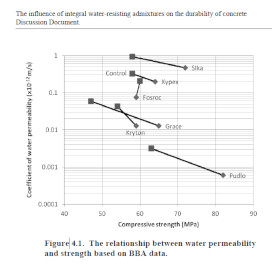
|
|
Pudlo immediately seems to be much better.
But, actually, if Pudlo had been added to the other control concretes it would have had similar results to those other brands.
Caltite is not here because the Caltite BBA certificate had less information. The report says the Caltite control concrete was not even as good as typical structural concrete. An academic paper cited in the report stated that Caltite only reduced transportation of water in much wetter concrete. It did nothing in low water concrete. This will be because Caltite contains no additional cement product. It contains a polymer emulsion that only works if it is thoroughly dried, which, obviously, has to be after the concrete has cured or else drying the concrete too early would affect its strength because the necessary chemical reactions would stop too soon.
|
Page 16.
"
When the original tests were conducted, the aim was to demonstrate the increase in performance over respective control concretes and so the various materials cannot be directly compared. This is demonstrated by the range in 28-day compressive strengths for the concretes containing water-resisting admixtures (59-82 MPa) and their control concretes (47-63MPa). In addition, many of the water resisting admixtures achieve a reduction in water/cement ratio and caution must be exercised when assessing performance (see Section 5.3) to differentiate between the effect of the change in water/cement (which could be achieved with a water-reducing admixture) and any additional effects.
"
Nevertheless, the same report states on page 36 "water/cement ratio .... primary measure of water penetration and hence the durability of the concrete."
1988: "Theoretically, cement pastes with a water / cement ratio of <=0.5 achieve capillary discontinuity"
Lea, F. and Hewlett, P. (1988). Lea's chemistry of cement and concrete. 4th ed, p888. Oxford: Butterworth Heinemann.
But in 1988 no one had discovered how to add sufficient workability to such a dry mix. Super plasticisers could not be used in sufficient quantity without getting unwelcome effects, such as flash setting or weeks of retardation.
In 2011, the new edition of a long-respected university text stated more clearly than ever before that completely waterproof concrete could be produced without admixtures.
"concrete with a low water/cement ratio ... make the capillaries discontinuous" Neville, A.M. (2011). Properties of Concrete. 5th ed, p330. Harlow: Pearson Education.
|
Waterproof Concrete Admixture Suppliers.
I found the guarantees given by some of these brands.
None of them seem to guarantee anything beyond what should be expected of structural concrete without any water-resisting admixture.
There are two examples of the Caltite guarantee on this web page. Where Caltite might have misled you is confusing the fact that Everdure Caltite, that contains a polymer, will waterproof non-waterproof concrete if the concrete is first kept moist inside and fully cured (which might take a month) then oven-baked long enough to dry the concrete and the polymer completely. They may have shown you an example where concrete above ground in Australia did exactly this. But beneath ground in Britain the polymer could not and will not work. Indeed, academic evidence is that if the polymer does not dry out it actually increases the transportation of water through concrete. The opposite effect.
You need to go to page 26 to find the exclusions in this Sika guarantee. Over the years I have had a few phone calls from people whose lives have been severely blighted by new basement construction suffering seemingly incurable waterproofing problems. All the worst sagas involved Sika. I was once called by someone calling himself a Sika sales manager who claimed this claim of mine was untrue. I was able to give him the phone number of one of these unhappy people. I didn't hear from him again.
If you go to the Kryton web site It all sounds very good until you realise that, like Sika, they are selling some extra cementitious powder and they promise only what extra cement will achieve. 0.25% extra cement does very little. But to say more water resistant, stronger, more durable would all be true even if only 0.25% true.
Pudlo and Xypex are selling extra cementitious powder as well.
Actually, the clever ingredient in every one of these admixtures is not a waterproofer but a powerful plasticiser. I am using the sixth I have found, each time having found better, and people who know tell me mine is best. Obviously, it is also the most expensive I found as well.
All powerful plasticisers are based on PCE, polycarboxylate ether, which is a very long molecule that clever chemicals can be fixed to.
Producers invent their own combinations of clever chemicals and patent them.
PCE with clever chemicals are used in concrete admixtures for a variety of uses, such as plasticiser, retarder and so on, and also in inks, paints and cosmetics.
Powerful plasticiser is a combination of PCE, electrostatic repulsion and glue.
The electrostatic repulsion isn't greatly different to naphthalene super plasticisers invented over 50 years ago. But with naphthalene it was liquid repelling liquid and its effect was limited.
PCE powerful plasticisers stick to the cement grains so that the solid cement grains are repulsed from each other and friction is reduced many times more than it was with the older technologies.
PCEs vary enormously. To have sourced a PCE is a long, long way from having sourced a very powerful plasticiser.
Beware of liquid PCEs. The 'glue' soon falls off after the stock arrives in the UK from the Far East. They effectively revert to a 50 year old super plasticiser technology in terms of effectiveness.
Never allow a liquid PCE plasticiser.
Every one of these product BBA certificates or the product literature or the safety document confirms that all allegedly waterproofing admixtures for concrete contain a powerful plasticiser. I believe the rest of what they say to be smoke and mirrors.
Since 2013 I have travelled to the USA and Asia many times looking for better and better plasticiser. The one I have now is very powerful indeed.
Waterproof concrete is so dense nothing can get through. But this very dense mix would be too dry to pump and properly compact. It (only) needs very powerful plasticiser.
I put my powerful plasticiser into the concrete at site.
It is the only way I can be sure that the batching plant limited the water content.
The concrete arrives with stones rattling loose in the drum and the concrete breaks apart as it is turned slowly.
My powder is added and I count 6 revolutions per cubic metre. It is quite clear, listening to the concrete, that my powder works because it becomes more workable, the stones stop rattling and the truck becomes stable and peaceful. Whereas it lurched at the start each time a huge volume of dry concrete crashed as the drum turned.
I feel that adding my admixture at site is the only way I can be certain the concrete has less water and that my plasticiser is definitely working.
None of the brands do this, as far as I am aware.
In particular, how could a liquid brand like Caltite know whether the tiny amount of essential powerful plasticiser within the 30 litres of mostly bituminous emulsion still works? Hasn't fallen to pieces?
Pudlo used a control concrete without admixture a lot more water resistant than the concrete other brands achieved even with their admixture.
Proving that waterproof concrete is at least as good as the Pudlo concrete with Pudlo in it. Or, perhaps waterproof concrete is a lot better. Perhaps it is zero and off the bottom of the chart by miles.
The proper test for waterproof concrete is BS EN 12390 part 8. But no BBA testing involved this proper test.
Pudlo's improvement wasn't greatly different to the improvement others obtained. If Pudlo was added to any of the others' control concretes, it would not be significantly different.
I think Pudlo continued to cheat long after they got a BBA certificate.
Pudlo have had presentation to specifiers slides available on the internet. This image is from that presentation.
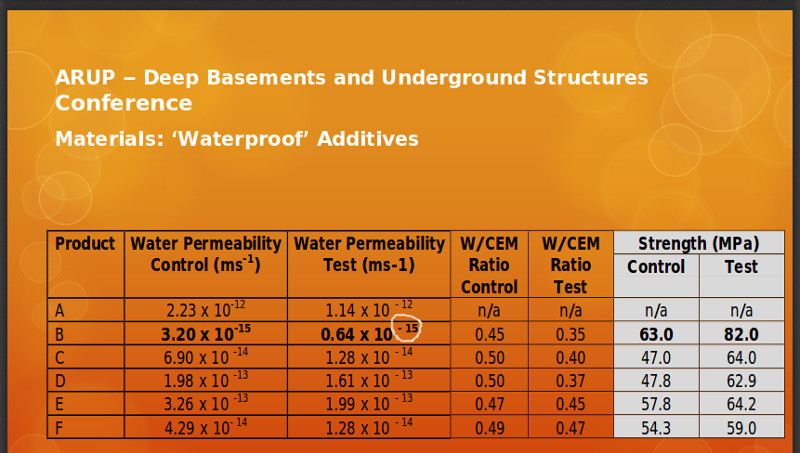
They highlight in bold, I added the white circle, a figure a thousand times better than the figure above, which is Caltite. These are the same figures from BBA certificates plotted on the chart above.
This table would allow you to believe that Pudlo is 1,000 times more effective than the product above. Whereas the chart shows you it made a similar tiny improvement comparable with the others.
If you look at the water cement ratio figures to the right of my white circle, the ratio in the control is 0.45, while the ratio in the test was 0.35.
10% less water by weight of cement could not be explained just by adding more cement to the control concrete, because 45% of 350kgs is 157.5 kgs or 157.5 litres of water per cubic metre of concrete.
To reduce the WCR by 10% to 0.35 would require another 100kgs of cement per cubic metre of concrete. Exactly 450kgs.
I have seen Pudlo at a batching plant. The paper bag could easily be held in a hand.
It weighed nothing like 100kgs. Probably about 8kgs.
Significantly reducing the water this much surely means three things.
-
They doctored the control concrete before they added their product by reducing the water in it. Cheating.
-
The concrete was made with insufficient water to make the 5% gypsum in OPC react first, meaning the concrete had a flash set instead of 2 hours working time. If this concrete was delivered to site it would barely come out of the drum. It would not go through a pump. It would take many more men the same time to spread it, compact it and finish it.
-
The grains of cement are not pushed apart at all. Pudlo seem to have managed to compact their test sample and, properly compacted, it would be a very strong and waterproof mix. Which is why they reduced the water in the way they did.
The massive increase in strength is only slightly because of their product. It is mainly because they reduced the water content.
If you think Pudlo is better because you saw this slide, you might now think you were duped.
Incidentally, this slide shows more clearly than my chart which data Caltite omitted. I think the Caltite admixture made the concrete weaker.
|
A bit more detail only this page for structural engineers.
Some suppliers state that the water cement ratio in the concrete mix should be 40%.
I spent years arguing with readymix producers that I wanted exactly 40%.
They said
-
We cannot mix concrete with only 40%
-
We don't know that accurately how much water is in the concrete, even with electronics.
-
Aggregate can be dry, saturated-but-surface-dry, or saturated to an infinite number of extents.
-
Two truck loads of aggregates, 60 tonnes, makes about 30 cubic metres of concrete.
If a plant makes a modest 120m³ in a day, it receives 8 trucks each with a different amount of water in each load.
-
The water tends to drain down in the bin for each aggregate. The top of the heap often has less water than the bottom.
As a load of concrete is batched, the loader loads aggregates with various water contents on to the conveyor where they begin to mix.
WHAT I GOT, WHEN I INSISTED ON 40% WATER, WAS A LOT OF CONCRETE PREMATURELY SETTING BEFORE IT ARRIVED AT SITE.
OPC contains 5% gypsum. The mix water in the concrete reacts with the gypsum almost immediately. That first reaction stops the cement in OPC from beginning to gel for about two hours, depending on the weather.
If the concrete is made with insufficient water, which might be around 42%, the OPC is setting before it arrives at site. If the concrete is setting before it arrives at site, adding more water only makes it set quicker. You cannot add workability with water until there is about 80% water by weight of cement, by which time the concrete is too weak for any structural use.
I have learned to deal with all of this. I am always on site genuinely supervising and sorting out problems before the workforce or client even realise there had been a problem.
IF YOU THINK A BRAND WOULD BE BETTER THAN ME ON SITE, YOU ARE WRONG. I BET THEY ADD MORE THAN THE WATER STATED ON THEIR BBA CERTIFICATE MOST OF THE TIME.
If a batching plant forgets to put in the Sika, Xypex, Pudlo etc, the driver can stop during his journey and add more water till it looks just the same. But that wouldn't be waterproof, would it?
A batcher sits at a computer.
To add Sika or any of the others, he has to remember, he has to stop the conveyor belt and stop production, he has to get up, put on a coat, reflective vest and hard hat, go outside, find the admixture and put it on the conveyor in the correct amounts his batching plant batches and mixes in one go.
How often do you think that happens? 90%? 30%?
|
Proving that you have Waterproof Concrete.
-
BS 8102:2022 refers the reader, on page 53, to BS EN 12390 part 8.
-
Crack open an old sample that has been kept moist or even wet.
BS 8102 deals with the waterproofing of beneath ground structures.
From 9.1 of BS 8102:2022 on page 36.
"Concrete structures containing a water resisting admixture should be deemed to have a lower degree
of water / vapour transmission when the design of the concrete mix and casting of the structure is
adequately supervised and the admixture is assessed and certified (see 9.2.1.3)."
I dealt with 9.2.1.3 in the text box 'What academia says about Waterproof Concrete', above.
"Where the waterproofing admixture has been assessed and certified by a UKAS-accredited body or
a European Technical Approval body, certification information should be referred to for guidance on
use and the extent or limitation of technical benefit."
|
|
Click on this image to open an original test certificate.
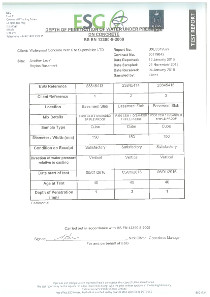
|
Note choice of words, "waterproofing admixture", and compare it to my explanation in the text boxes above.
No one sells a waterproofing admixture that waterproofs a non-waterproof concrete used beneath ground where it could not dry.
Specifiers should ask for samples of concrete used in the basement floors and walls to be tested to BS EN 12390 part 8.
This is the start page on the British Standards web site for BS EN 12390, Testing Of Hardened Concrete.
Part 3 is used thousands of times every week: Compressive strength of test specimens
Part 8 is Depth of penetration of water under pressure.
|
Here is a photographed extract from my copy of "Advanced Concrete Technology", the volume called "Processes", the Chapter called "Concrete construction for liquid-retaining structures" by Tony Threlfall, 2003, Butterworth-Heinemann. Page 16.2.
|
|
Click on this image to be able to read the text from the whole page.
|
|
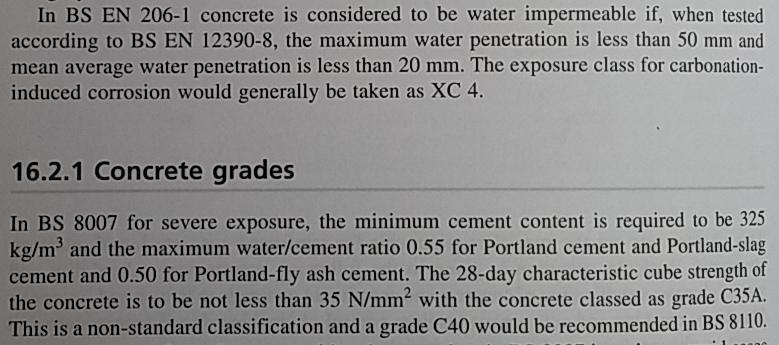
|
The pass mark for BS EN 12390 part 8, depth of penetration of water into hardened concrete, is 20mm.
If your architect, structural engineer, building control officer, warranty provider or lender insist on you using a product with a BBA certificate. Fight back. They will think they are still correct trying to meet the 2009 version of BS 8102. They are not meeting BS8102:2022. Go here to the
BS8102 page where I reveal the truth behind BBA certificates.
Nowhere does BS 8102:2022 mention BBA or BBA certificates.
Another certificate. ESG became Socotec between 2016 and 2018, but they are from the same lab.
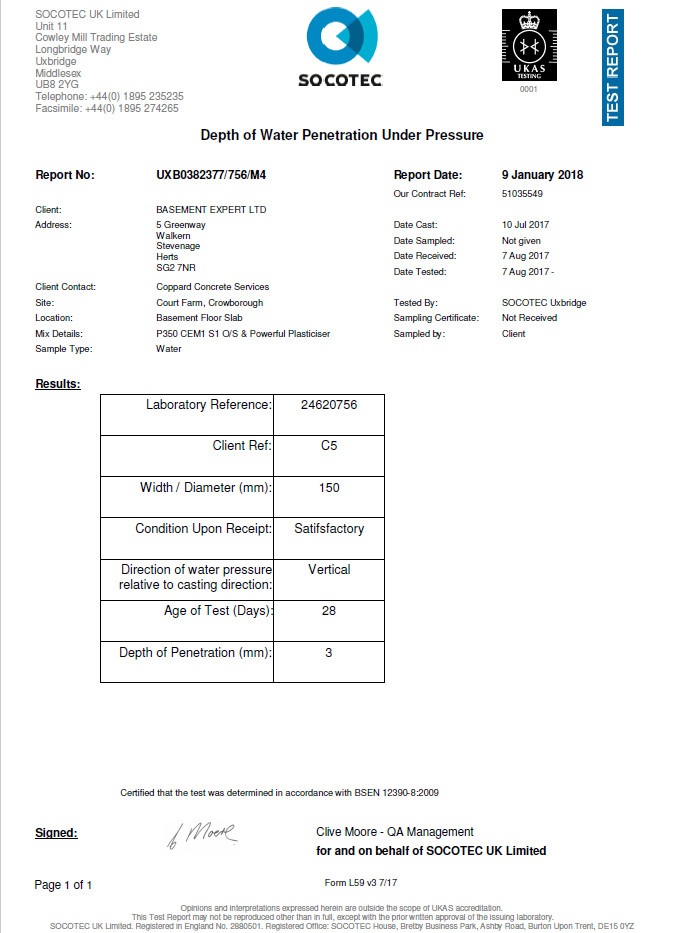
|
I happened to break out some waterproof concrete I had left in very wet conditions for two years.
I often explain to people that in waterproof concrete there is always unused remnant of cement grain and unused water. But they are separated by a relatively thick mat of crystals of hydration.
Therefore, when I cracked this concrete, it was very green. I put it in my bucket to throw in the skip.
But after an hour, I realised that the remnants of cement would be reacting. I took this photo. it is clearly turning from green to the same pale grey as the original surface.
If the concrete had not been waterproof all that time, water would have found the remnants of cement and it would not have been so green when I first broke it.
Cubes could be taken and stored in water for several months before being cracked open, let's say during a site meeting.
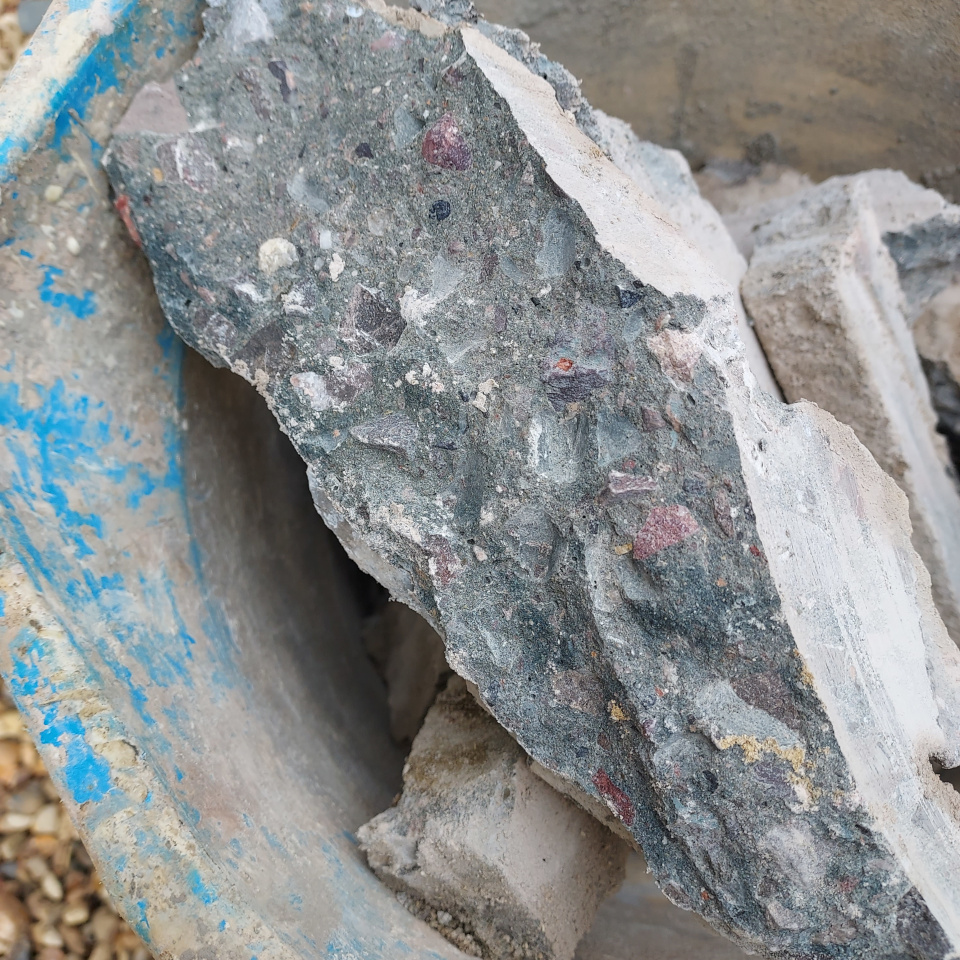
|
Why concrete wall kickers could never be waterproof.
Concrete kickers are notoriously un-waterproof.
The biggest enemy of waterproof concrete has to be a concrete kicker, a small upstand on the slab to clamp traditional formwork to.
They are only there for the benefit of the formwork carpenters, not the client.
|
|
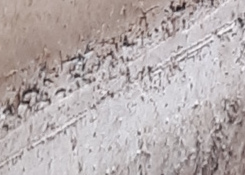
These 3 images are from a site that leaked for 8 years before it was decided to fix them.
|
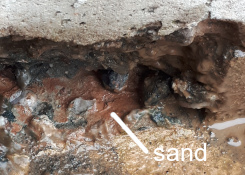
This kicker was formed on top of sand no one cleaned first.
|
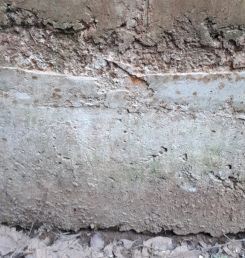
|
This third image shows typical honeycombing at the base of a wall pour, as well as poor kicker concrete.
Any tape or strip in honeycombed concrete fails.
|
In my experience, the years before I began building domestic basements when I worked on large projects such as shopping centres, schools and office blocks, concrete kickers were made in a few different ways.
-
The kicker was formed as in the photo below. When the form was filled, it was vibrated and all the kicker concrete sank into the slab. They soon stopped pokering the kicker, so it wasn't compacted.
-
They poured the slab then a couple of hours later they formed the kicker on the slab. They fetched some concrete in a barrow that had been set aside when they poured the floor. By now, this was well out of time and extremely stiff. They filled the form with this concrete and the carpenter banged the timber a few times with his hammer. The kicker concrete is only about 90% dense. It will leak badly.
-
Similarly to the photo below, they start the pour over-filling the kicker form and vibrate it till it sinks to about the right level. Then they take the concrete pump to a different part of the slab that might get poured and compacted quite well. But the kicker, and the concrete beneath it and close to it have only been tickled. They look the best of the 3. But the kicker and the slab concrete beneath it are all very porous.
-
It would be nice if they cast the floor slab, put down a hydrophylic strip before they form the kicker, fill the kicker with fresh, waterproof concrete properly vibrated and put another hydrophylic strip on top.
But I never saw any of that happen.
Besides, if you properly vibrated 100mm high concrete in a kicker it would be all over the site. The poker wouldn't leave much concrete inside.
In this photo you can understand why the concrete in the kicker sinks into the slab if the concrete is compacted properly with a vibrating poker.
Therefore, kickers end up getting made out of old concrete already setting or the wrong mix bought in for something else.
This poker is obviously being allowed to dwell in one place too long. This will knock the largest stones away first and eventually the sand as well so that when the poker is withdrawn there will be just a column of water through the concrete.
|
|
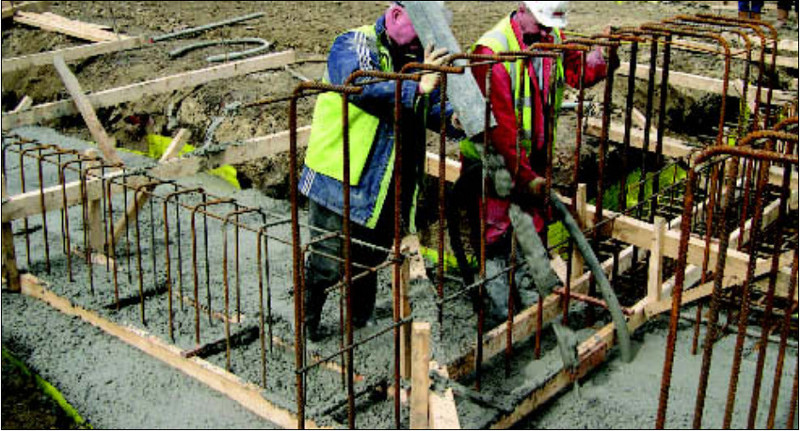
This photo is from a BBA certificate for a water-resisting admixture.
As a practitioner, I think this supplier, and I presume BBA as well, are absolutely clueless. (I first wrote this accusation years before it was confirmed by the Grenfell Tower fire inquiry).
|
|
Solutions.
I show a few alternatives on my page about kickers.
This is how I build a basement without kickers.
It starts with triangular braces fixed precisely to the floor slab.
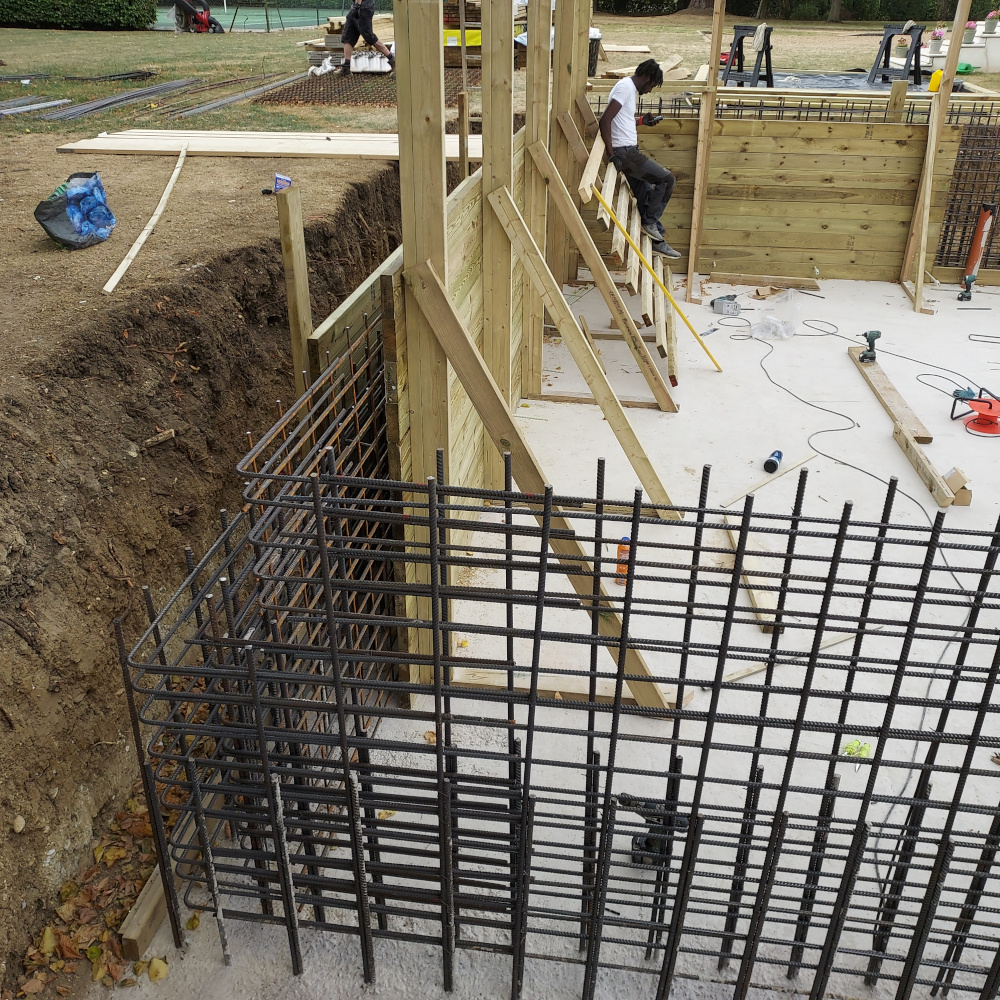
The formwork one side is fixed to the brace one board at a time. You can see the bottom row of FRP threaded rods that get cast in as well.
The formwork the other side is easily spaced by putting nuts on the rods inside the form and winding them to the correct wall width.
The common mistake engineers make when casting a basement wall against piles.
A couple of examples.
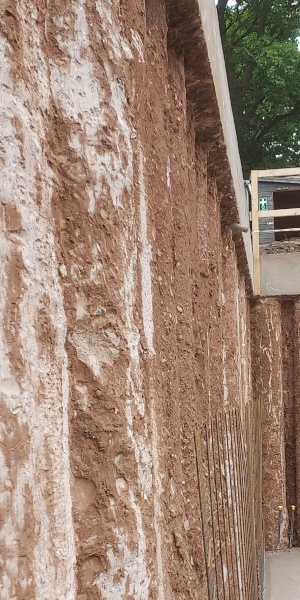
|
|
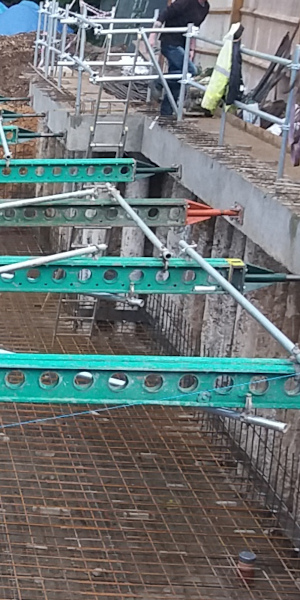
|
|
The mistake is expecting reinforced concrete against the piles and up under the pile cap.
One time, we tried casting in pipes to get the concrete through, but vibrating it with rebar obstructions was patchy at best.
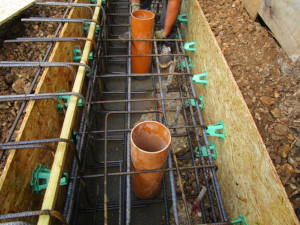
|
The example on the left is 2024.
I argued, but they said that by the time I was involved I was too late, that the pile cap had to be offset backwards so that face concrete could be dropped down in front of the pile cap, into the form.
I then pointed out that BS8102:2022, at 6.2.5, states "The need for continuity in the waterproofing protection should also be determined when selecting a type of protection. In most circumstances, the protection should be continuous (typically from DPC level or 150 mm above ground throughout the below ground structure)"
This is what I came up with.
I don't understand how they were going to support the inner skin of the cavity wall. I think that had been 'in abeyance'.
There is a swimming pool under this section of ceiling. The architect had engineered timber joists specified, until I insisted he checked with manufacturers timber was OK over a pool. All the manufacturers said no. My saving the day again telling them they need an RC ceiling over the pool area.
He had a patchy little bit of membrane over the ends of the timber joists as his waterproofing measure. Just dangling. not stuck to anything. i told him to stop specifying measures plainly not liked by the Standard.
Anyway, this solution of mine is how it will be built.
|
|
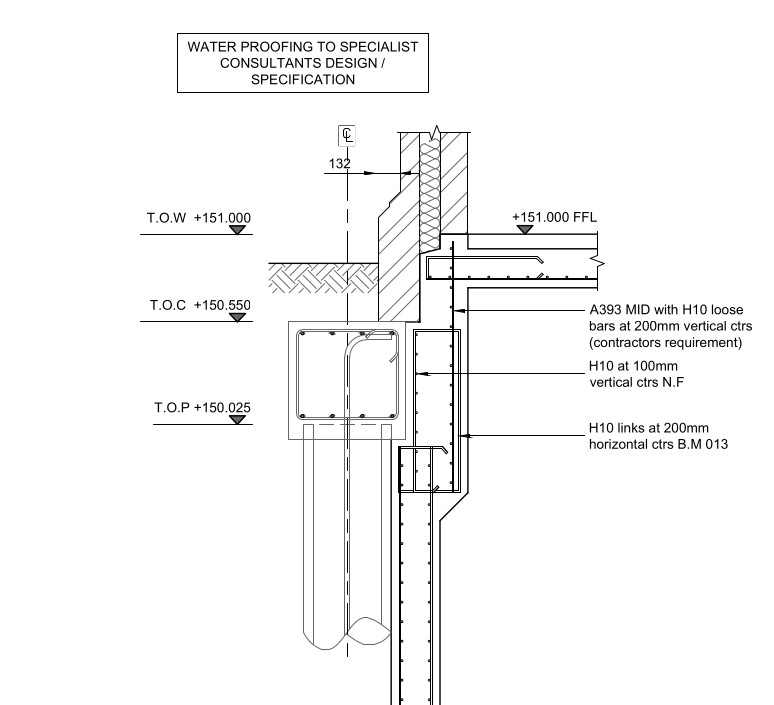
|
Case Study. How the engineer can waste thousands of pounds of client's money putting a podium deck over a basement.
Steel Beams and precast concrete planks.
I was approached about the basement construction here 7 years earlier but didn't get or didn't want the work (I don't remember). After the first basement was built it was decided to carry on and build the buried swimming pool structure. The first basement got covered in beam and block a few years later. The choice of roof over the pool area was made at the initial design stage and I was asked to install it 7 years later. A good opportunity to experience what I thought was a bad idea.
The design was for the steel beams and the precast planks to bear full width upon the retaining wall all round. I was, at least, able to get that reduced to 200mm even if I couldn't sell cast insitu instead (because it was deemed quicker to stick with what they had rather than find an engineer to design a new alternative).
This meant I had the opportunity to
-
Scabble the top of the retaining wall,
-
Drill in some dowels,
-
Increase the mesh size in the structural screed that will be next over the top and use waterproof concrete.
I don't think we should pretend anyone else would have covered this deck with waterproof concrete and made sure it was sealed to the retaining walls all round.
The client told me what the roof above was costing him. It was very time-consuming, frustrating, difficult and annoying.
Bear in mind, the precast plank people take full control. The steel beams above were down to me to get in as was casting the structural screed over the top of it.
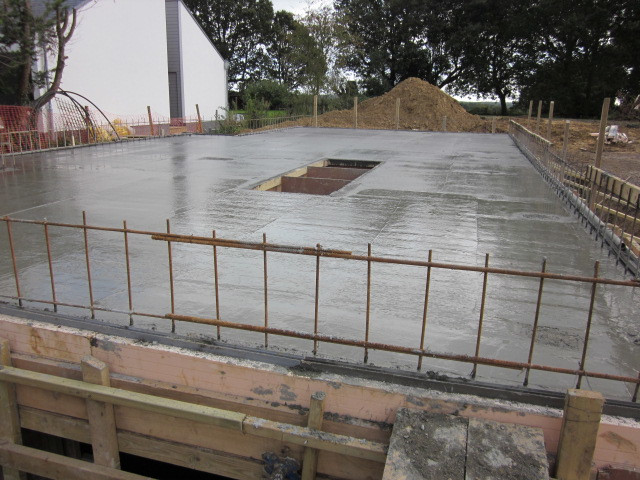
|
|
whereas
I built this 9m span roof over a basement in 2012 and I know what it would cost me today.
|
The cost of the steel beams and precast planks.
The steel beams were in but the precast planks weren't installed till the 4th date we were given. First time we were ready and the installers were ready the articulated trucks couldn't get near enough to the crane. The second time the same crane driver with the same crane refused to go down the drive, the third date was too windy and finally, with the planks already delivered and offloaded, a different crane did the job. Two weeks was lost and they tried to bill the client thousands of pounds extra. Their "trick" was, at every opportunity, to get the client to agree an email buried within which was a phrase making him completely responsible for design, safety and cost. Completely unfair.
The steel beams and planks save the cost of falsework to support an insitu pour, but the steel beams and planks mean the concrete pour on top is small, possibly incurring small load concrete charges and definitely meaning you pay four hours for a pump you only need for one hour.
This roof cost the client:
£19,000 for 5 large steel beams
£1,000 for two small beams
£3,000 nearly for transport and galvanising the steel beams
£14,000 for 42 precast planks and installation, fortunately only the one crane hire despite their trying to make him pay for three
£2,000 my team of 3
£300 for a surveyor to mark the bolt holes
£350 for a concrete drilling specialist
£72 to hire the trolley we used to get the beams down the drive
£4,000 contract hire to lift the steel beams into place
£2,000 readymix concrete, and
£480 for the concrete pump.
£1,000? for the client's structural engineer.
Total £47,202.
The overall size is 9m x 17m to outside edges. With confidence I believe that just reinforced concrete instead, temporarily supported by Acrow props, timber and ply, my way, with my admixture would have cost me, even with profit if it were for a fixed price, £125 a square meter. £19,125.
If you add £2,000 for an engineer's design and VAT that amounts to £25,350.
In the past I have charged £175 per square meter plus VAT which was usually zero rated. That is £26,775 and I would have had a really good week.
Even £26,775 plus £2,000 for an engineer plus VAT is only £34,530. This roof could not have cost £47,200 if I had cast it insitu.
The client knowingly paid the extra to avoid any further delay, but all the manufacturing and installation delays added up to 4 weeks.
Because my time was paid for by this client (I worked for him, not on a price), even with VAT on design and materials, this roof should have cost him £17,600.
Some of the health and safety was indefensible. The big beams weren't to be bolted down but the plank people insisted at the last minute that they were. The bottom flanges are 400mm wide, 30mm thick steel. They claimed that with a plank one side these beams would twist.
They wouldn't twist if they were bombed. But another £1,000 was added to the client's costs at the last minute to get the holes set out precisely, drilled precisely, threaded rod and nuts sourced and supplied and resin-anchored-in all the day before the beams arrived.
Another memorable aspect was that when the project manager came to site to measure up and said different things to what the office had sent in writing, he said they haven't got a clue in the office sometimes.
He prepared a lifting plan that he wanted the client to sign off and take full responsibility for. When his crew eventually lifted the planks in - but in a completely different sequence to his plan, they said project managers don't know how to do it.
We lifted a 1.7 tonne steel beam to within 2.5m of the end wall with a 65 tonne crane. The project manager specified a 95 tonne crane because his planks each weighing 1.3 tonnes had to be lifted a bit further - but no more than 4m further.
We questioned this several times.
In the event, the crew lifted 2 planks, 2.6 tonnes, together almost to the farthest point. The project manager made the client pay for a much bigger crane so his crew could finish by 11.30am though, no doubt, the client paid for the crew and the crane for the whole day.
At every stage and seemingly in every way possible the client was cheated, frustrated, robbed and delayed. It was as if because the plank people could take advantage of a timid private client (as distinct from a major house builder who probably calls more of the shots) they did their best to maximise the opportunity.
Quick case study. Steel beams, cold bridging and mould.
I would just like to go off at a tangent. Waterproof concrete is so dense it is thermal mass. It could not be a cold bridge as well. It is as good as some insulation.
The reason steel beams are the worst choice is heat loss and cold bridging made worse by the heat conductivity of steel pulling huge amounts of heat out of the room and creating cold spots for condensation and mould.
This work was in 2010 before I learned, 3 years later when I was asked back to see the mould, never to allow steel beams over a basement unless there is lots of construction over the ends.
Mould is an awful problem. It must be avoided at the design stage. Never specify steel beams founded on the retaining wall.
You would not have any of these problems with a cast insitu RC ceiling with insulation over the ends. See the image at the top of the page reproduced in the menu image just below. The upstand in the retaining wall is the insitu deck over the basement. Room for insulation and face brickwork. Waterproof.
Many of my clients changed architects while only a few changed engineers. I hope you argue for what is right for your client.
|
Back to the Basement Building Questions Answered menu.

|
Forward to the Basement Building Construction Manual menu.

|
For a fixed fee of £199 I will answer all your questions by email. More details here.

|
Previous Page
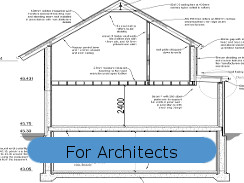
|
|
Next Page
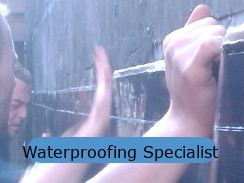
|
|
The Page After That

|
|
|
